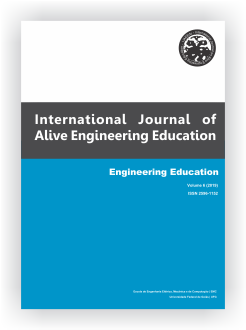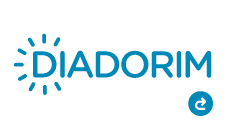Tests of pervious concrete as learning tool Comparative Study About: Evolution of the Trait, Methods and Complementary Analysis
DOI:
https://doi.org/10.5216/ijaeedu.v6.59576Abstract
The execution of pervious concrete pavements has been used over the years as a pedagogical resource in the Civil Engineering course at UNEMAT - Universidade do Estado de Mato Grosso, campus of Tangará da Serra – MT – Brazil. With the purpose of aggregating scientific knowledge to the academics, providing advances in the technique used in the production of pervious concrete, as well to the development of the University's physical space. In this article, some of these studies will be presented in order to discuss the scientific observations made by academics in the development of practices and to evaluate the evolution in the methodologies of trait and execution. The characteristic that allow water infiltration has made porous concrete chosen to remedy problems due to the accumulation of water at several points on campus. In addition, another necessity was to promote the interconnection between classroom blocks. The works were evaluated taking into account the reports developed by the academics during the activities. In this analysis, the advancement of the techniques employed even when the students did not have the appropriate equipment. It was possible to observe modifications in the techniques of staining the concrete and the level of difficulty of the drainage process involved. The results were discussed in view of both the evolution of the technique of preparation of the pervious concrete pavement by the academics, as well as the practice as a didactic and social resource. Recently, besides the permeability, the thermal properties of porous concrete have also begun to be explored. Would the pervious concrete pavements has betters thermal performance than the conventional ones? In the state of Mato Grosso for presenting high annual average temperatures if, the pervious pavements contributes to a lower heat retention compared to the conventional one, this would show an excellent alternative for the substitution of the conventional pavements, prioritizing the thermal comfort of the academic community. Because of that, a comparative analysis was performed between the temperature values recorded in the porous pavements, in the conventional and green areas of the campus. The methodology of this research consisted in performance of temperature measurements with an infrared thermometer, the measurements was for 20 days distributed in four months, four times per day (8 a.m., 11 a.m., 5 p.m., and 7 p.m.). The rainy season in the region caused some variations in the results, since conventional concrete, when moist, takes longer to lose this moisture and absorb heat. The colors chosen in the painting also influenced results, because, in the pavements that the pervious concrete was not painted, showed lower temperatures than the conventional. The development of activities related to the analysis and production of pervious concrete contribute to the academic training of students of the Civil Engineering course on two fronts: obtaining technical knowledge and capacity for teamwork, exploring all the basic procedures of the routine of a real work.
Downloads
Published
Issue
Section
License
Copyright
The author is responsible for the following statements by submitting an article electronically in the International Journal of Alive Engineering Education (IJAEEdu):
a) States that the document in question was reviewed by an expert in English language and it is an original work and it holds the prerogative to grant the rights contained in this license. It also states that the document does not infringe, as far as it is possible to know the rights of any other person or entity.
b) If the document in question contains material which does not hold the copyright, the author states have obtained the copyright holder’s permission to grant the Universidade Federal de Goiás (UFG) the rights required by this license, and that such material whose rights are third is clearly identified and acknowledged within the text or content of the document.
c) States that the study was conducted in accordance with the ethical standards of all applicable institutional, local, national and international guidelines.
d) It also states that any person appointed as author or co-author of the document is aware of it and agrees to be so appointed.
Authorization Form
As responsible for the submission of the document, I authorize the School of Electrical, Mechanical and Computer Engineering of the Federal University of Goiás to provide the paper free of charge, through the Electronic System for Publishing Magazines UFG (SEER / UFG) or in printed form, without compensation of copyright, in accordance with Law No. 9610/98. Is allowed, reading, printing and / or download, as a promotion of the Brazilian scientific production. Any use of the work not authorized under this license or the copyright law is prohibited.



